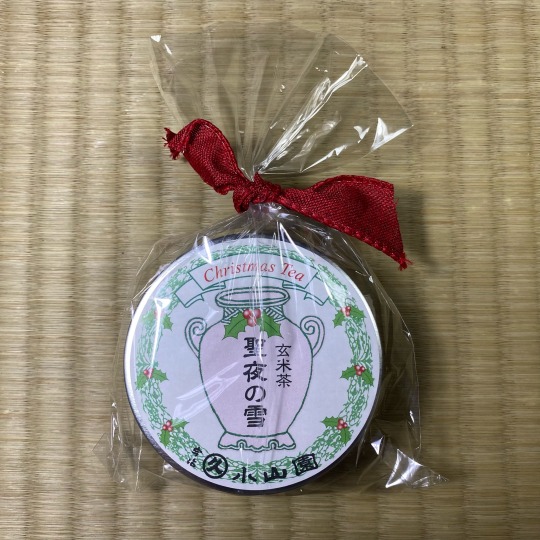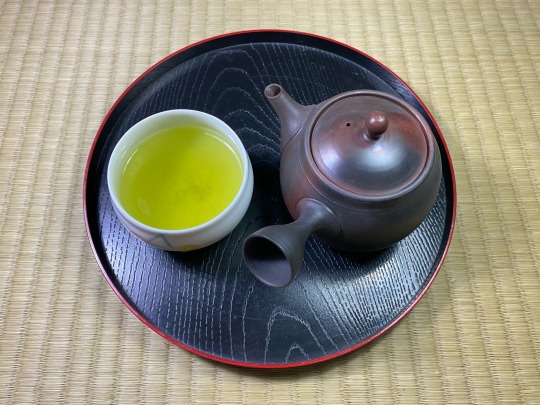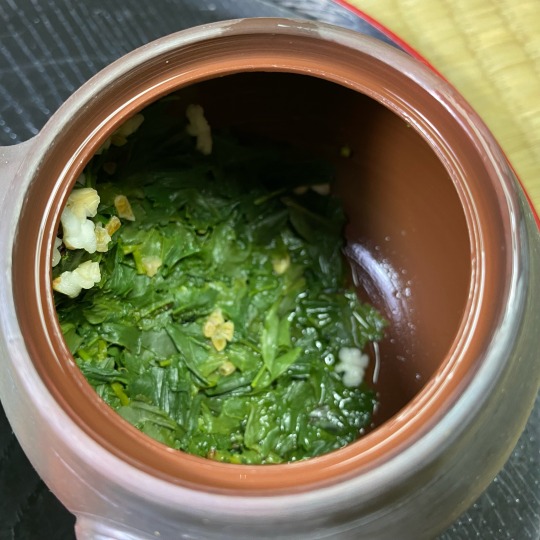#kabusecha
Text





Japanese style afternoon tea
วันนี้มาในธีม “อาภรณ์พรรณวิจิตร” เครื่องชามโอริเบะยะกิ (織部焼) รูปทรงพริ้วไหวและเคลือบสีเขียวตัดลายทางน้ำตาลช่างเข้ากับขนมมิสึมันจู (水饅頭) แป้งที่ใสราวกับหยดน้ำ สัมผัสหนึบหนับและเด๋งดึ๋งที่คล้ายขนมเปียกปูนห่อหุ้มไส้ถั่วแดงกวนและมันม่วงกวนที่ไม่หวานมากแต่ยังมีสั���ผัสเป็นเนื้อถั่วให้เคี้ยวเพลินได้อยู่ ล้างปากด้วยคะบุเซะฉะ (冠茶) ที่รวมข้อดีของเกียวคุโระและเซนฉะคือมีรสอุมามิเข้มข้นเหมือนเกียวคุโระแต่ก็ยังไม่ทิ้งรสฝาดและกลิ่นหญ้าสดชื่นอันเป็นเอกลักษณ์ของเซนฉะไป ชามื้อนี้เติมเต็มความสุขและให้ความเพลิดเพลินให้กับช่วงบ่ายวันนี้ได้อย่างสมบูรณ์
10 notes
·
View notes
Text

7 notes
·
View notes
Note
if you’re still wanting some n.injago stuff I wanna know what you think everyone in the main group tastes like. I think jay tastes like blue raspberry. Kai tastes like spicy noodles or salsa. Cole probably tastes like a very earthy yet protein heavy salad. Zane tasted like metal but with an undertone of vanilla icecream. Maybe nia tastes like some crazy dish you wouldn’t expect to work so well. Woo tastes like a fine wine/cheese. Etc.
Oooh, that’s an interesting question, and I really like your headcannons! Personally I see Jay tasting like blue cotton candy, Kai as a spiced cinnamon tea with maybe a little bit of orange in there, Cole is a earthy dark chocolate, Zane is absolutely metallic with the faintest hint of vanilla, Nya is more of a curry, and Wu is Baihao Yinzhen or ‘Silver Needle’ white tea (which is delicious).
As for any other characters, I see Lloyd as maybe a sweet milky matcha candy or maybe even Kabusecha green tea, Borg as tasting kind of like Japanese clear soup (a personal fave of mine), Garm.adon strikes me as maybe a Yunnan black tea, Pixal might be a kind of lavender strawberry with more of a rubbery as opposed to metallic taste, and Mis.ako could be pho with very heavy mint.
I’m not 100% on all of these, but you get the general idea lol
#getting to show off my tea knowledge haha#picked a lot of tea but that's just cause the fsm family has those vibes#Lloyd is very sweet tho that's a rule#soft vore#safe vore#fandom vore#vore mention#ask#anon ask#n.injago vore#I think everyone needs to try pho and clear soup at least once in their lives please and thank you
30 notes
·
View notes
Note
could you explain those teas more? I’m basic and don’t know the difference besides green v black v herbal etc.
i can try tho im not an expert regarding the historical origins of most of these :P
da hong pao (aka "big red robe" or "grand scarlet robe") is a specific type of oolong tea originating from the Wuyi Mountains in Fujian Province, China. True Da Hong Pao is incredibly expensive, and possibly not available to the public anymore, due to only 6 "mother trees" remaining after thousands of years. Most Da Hong Paos you'll see are actually derivatives or cultivars meant to be as close to the true da hong pao as possible. my current favorite is Red Blossom Tea Company's Heritage Beidou (their Heritage Golden Buddha is also very good and substantially less expensive). These derivatives are typically what I group as "Wuyi oolongs" since they're all grown in that specific area in China. Wuyi oolongs are typically closer in color to black teas and are brewed at higher temperatures relative to the leafy green oolongs.
as an aside, an oolong is just a semi-oxidized tea. the oxidation amount varies from 8% (more like green teas) to 85% (more like black teas) so there's a huge range of stuff contained within the "oolong" category.
lapsang souchong and russian caravan are smoky black teas, though russian caravan is typically a blend of oolong, black, and lapsang souchong. Lapsang also comes from the Wuyi mountains. It has a very strong smoky taste, which I like a lot, but can be a bit of an acquired taste. Russian Caravan is a good one to try if you're looking for less of that smoky taste, and you can make it yourself if the premade blends don't have the right balance for you. The typical black tea used in russian caravan is a keemun black tea and a darker oolong (not leafy, wuyi is probably good, maybe i should try blending that myself sometime).
ocha is japanese for green tea (koucha is black tea). Ocha I think can refer to either sencha (whole leaf) tea or matcha (powdered) teas but I might be wrong about that. Within these categories is a whole subset of things (shincha, gyokuro, Hachijūhachiya or 88th night sencha, kabusecha, genmaicha, and more) that I am not well-versed in lol. I typically stick with a standard sencha, and a gyokuro if i'm feeling fancy. I'm also fond of dragonwell (longjing, a pan roasted green tea type from china)
4 notes
·
View notes
Text

Fushimi's top 4 flavours of green teas ::
Hojicha ( default blend he prefers at home )
Kukicha
Kabusecha
Konacha
3 notes
·
View notes
Photo

While most kabusecha is shaded directly, Shiranami is shaded under shelf-style screens. This allows greater air and moisture circulation, letting the plants grow more freely 🍵 — view on Instagram https://ift.tt/6S4pnmZ
7 notes
·
View notes
Text
my roommate bought one of the snapple “element” teas and i was so perturbed by how poorly the flavor / tea combo matched the element that i came up with my own elemental tea blends:
fire: lapsang souchong with cinnamon bark and cloves
water: kabusecha green tea with prickly pear and coconut water
earth: shou pu erh with cacao and ginger
air: bai mu dan white tea with cloudberry and bee pollen
2 notes
·
View notes
Text
tried kabusecha recently and my review that no one asked for:
visual: a bright, luminescent yellow-green colour, reminiscent of when you don’t pee or drink water for a whole day and you get almost neon piss, actually a rather attractive and unusual colour for a tea
smell: nice mild fragrance, a slight grassiness that you get from green teas, very lovely and refreshing and would smell again
taste: quite bitter (far more than your typical well brewed green tea) when it hits the tongue, then you taste some of the grassy, earthy green tea notes over your tongue back, then you get a strong bitter aftertaste at the tongue root as it travels down your esophagus, personally enjoy the bitterness of tea in general very much and it has a brightness that feels nice on a hot summer day
other: had it hot and personally don’t think i’d enjoy it as much if it were cold, something abt the heat rounds out the bitterness in a pleasant way
5/5 (i’m easy to please for most teas so such a rating is expected)
#just a thought#i also like a similar bitterness in my black teas which i consume most often#but the grassy + bitter was a new interesting combo
1 note
·
View note
Note
How about I give you some matcha or kabusecha powder for your troubles? (Such as having Azul as a brother.)
It would be greatly appreciated, thank you.
#unreality#twst roleplay#twisted wonderland#twst oc#twst oc rp#twst rp#twisted wonderland roleplay#twisted wonderland rp#oc rp#Xanhlio Ashengrotto
0 notes
Text

八十八良葉舎: かぶせ茶の炭酸水出し
#Instagram#tea#japanese tea#green tea#wagashi#japanese sweets#kabusecha#お茶#日本茶#緑茶#かぶせ茶#和菓子#炭酸水出し#水出し冷茶
232 notes
·
View notes
Photo

How to prepare Japanese green tea
#tea#green tea#japanese green tea#japanese tea#Hojicha#roasted green tea#tea time#tea drinker#tea lover#Genmaicha#Bancha#Kukicha#Sencha#Konacha#Matcha#Gyokuro#Tencha#Kabusecha#Tamaryokucha#Shincha
71 notes
·
View notes
Text





Seiya no Yuki (聖夜の雪) 30g can 700THB, brown rice (玄米; genmai) blended with kabusecha (かぶせ茶), available before Christmas
Rating score: 0(cannot detected), 5(overwhelming detected)
Body: 2
Umami: 2
Sweet: 2
Bitter: 0
Salty: 0
Astringency: 0
Aroma: 2
Taste sequence: umami and sweet
Aftertaste: 0
ชาคาบุเซะฉะผสมเก็นไมสำหรับเทศกาลคริสต์มาส ของมาถึงก่อนปีใหม่ไม่นานแต่เพิ่งได้ชง บอดี้ชากลางค่อนอ่อนไม่หนักมาก กลิ่นหอมเกนไมและสาหร่ายอ่อนๆ พอมีอุมามิบ้าง เป็นชาที่เหมาะสำหรับดื่มสบายๆมากกว่าจิบเอารสชาติ ไม่แนะนำให้ทานพวกขนมที่มีรสจัดไขมันหนักพวก เค้ก เบเกอรี่ คุกกี้เพราะจะกลบรสชาติชาหมด
6 notes
·
View notes
Photo

Kabusecha is sencha that has been shaded, generally for around two weeks, in order to create a stronger umami flavor in the leaves. That also requires increased fertilization. This Kabusecha though has been shaded but not fertilized; Kyoto farmer Shinichi Kihara, who I met years ago at a farmer’s festival, grows according a philosophy called Shumei Natural Agriculture, which takes a spiritual approach to agriculture and avoiding the use of man made products like pesticides and fertilizers, organic or otherwise (at least that’s what it seems to me…although I don’t think I have a good understanding of it). The result is a Kabusecha that has a lighter flavor and sweetness but more bitterness than you’d taste in more conventional teas. #tea #greentea #japanesetea #nature #agriculture #organic #tealove #tealife #sencha #kabusecha #kyoto https://www.instagram.com/p/Cfq7NK2rjQ7/?igshid=NGJjMDIxMWI=
1 note
·
View note
Photo

Zapraszam we wtorek (25.09) o 19:00 na warsztaty o popularnej japońskiej herbacie - sencha. Na zajęciach dowiedzą się Państwo troszkę o jej historii, uprawie i akcesoriach do zaparzania. Wytłumaczę kilka terminów takich jak shincha, kabusecha oraz czym różni się sencha asamushi od fukamushi. Porównamy sobie różnej jakości susze i będzie to przede wszystkim wspaniała okazja do spróbowania trzech naszych tegorocznych propozycji. Warsztaty mają luźniejszy charakter niż przy matchi, każdy uczestnik będzie miał możliwość samodzielnego zaparzenia herbaty. Koszt - 30 zł. Proszę o rezerwacje na maila [email protected].
Barbara Korona.
(Spotkanie jest dedykowane osobom które już uczestniczyły w warsztatach podstawowych, ale jeżeli ktoś interesuje się herbatami japońskimi nic nie stoi na przeszkodzie żeby się do mnie zgłosić).
#warsztaty herbaciane#herbaciarnia#sklep z herbatą#wiedza o herbacie#japońskie herbaty#sencha#shincha#kabusecha#czajownia#kraków
2 notes
·
View notes
Photo

texture & pattern
.
.
.
Tea time - Kabuse-cha from Uji - Gokô cultivar
.
.
.
16 notes
·
View notes
Photo

While most kabusecha is shaded directly, Shiranami is shaded under shelf-style screens. This allows greater air and moisture circulation, letting the plants grow more freely 🍵 — view on Instagram https://ift.tt/MNSCeit
6 notes
·
View notes